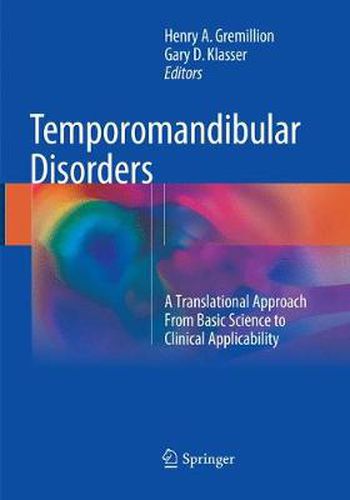Readings Newsletter
Become a Readings Member to make your shopping experience even easier.
Sign in or sign up for free!
You’re not far away from qualifying for FREE standard shipping within Australia
You’ve qualified for FREE standard shipping within Australia
The cart is loading…






This book acquaints the reader with the basic science principles needed in order to understand temporomandibular disorders (TMDs) with a view to helping practitioners manage individuals with TMDs in accordance with the tenets of evidence-based dental medicine. The opening chapters provide essential information on the embryology, anatomy, and physiology of the masticatory system, which includes both myogenous and arthrogenous anatomic structures.
Using this knowledge as a foundation, the reader will be better prepared to grasp the function and, ultimately, the dysfunction of masticatory muscles and the temporomandibular joint, both of which are addressed in detail. The book’s final section is exclusively devoted to management principles and includes a chapter on psychosocial considerations. By following a translational approach to evidence-based practice measures, as outlined in this book, the clinician will be excellently positioned to choose appropriate interventions on a case-specific basis.
$9.00 standard shipping within Australia
FREE standard shipping within Australia for orders over $100.00
Express & International shipping calculated at checkout
This book acquaints the reader with the basic science principles needed in order to understand temporomandibular disorders (TMDs) with a view to helping practitioners manage individuals with TMDs in accordance with the tenets of evidence-based dental medicine. The opening chapters provide essential information on the embryology, anatomy, and physiology of the masticatory system, which includes both myogenous and arthrogenous anatomic structures.
Using this knowledge as a foundation, the reader will be better prepared to grasp the function and, ultimately, the dysfunction of masticatory muscles and the temporomandibular joint, both of which are addressed in detail. The book’s final section is exclusively devoted to management principles and includes a chapter on psychosocial considerations. By following a translational approach to evidence-based practice measures, as outlined in this book, the clinician will be excellently positioned to choose appropriate interventions on a case-specific basis.